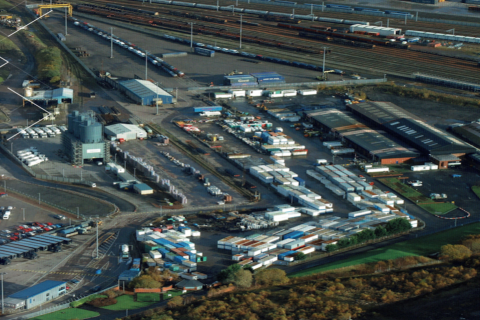Hupac pleads for Swiss subsidies railway till 2030

The productivity gains of the Alptransit project with the opening of the Gotthard and Ceneri base tunnels are lower than expected. This conclusion is based on a simulation produced by Swiss combined transport operator Hupac. In order not to jeopardize the modal shift process, the operating subsidies should therefore be continued at a lower level until the Rhine-Alpine corridor has been fully expanded, the operator says.
By 2023, the Swiss subsidies for combined traffic will be abolished. The rail freight industry has been preparing for the reduced financial support in various ways. Hupac expects that by 2024 half of today’s operating subsidies – around 110 million Swiss Francs (0.88 million Euros) for the entire transalpine combined transport – can be compensated, primarily by using improved train parameters.
Track access charges
The reduction in track access charges planned by the Swiss Federal Office of Transport as of 2021 will also reduce the burden on freight traffic; however, this will by no means be sufficient to compensate for the loss of operating subsidies for transalpine combined transport as of 2024, Hupac believes.
“Track access charges in Switzerland are far from the European benchmark, which is currently falling even further as a result of the reductions in track access charges in Germany and the Netherlands,” explains Hans-Jörg Bertschi, President of the Board of Directors of Hupac Ltd, on the occasion of the Hupac Group’s media conference on annual results.
“In order to continue the positive dynamics of the modal shift, Switzerland’s operating subsidies should be provided at a lower level until around 2030 to bridge the existing deficits,” Bertschi suggests. Only after the complete upgrading of the Rhine-Alpine corridor and the restoration of smooth traffic on a disruption-free infrastructure, combined transport can take advantage of the full productivity benefits of Alptransit and operate self-sustainably.
Transalpine growth: successful modal shift
Transalpine traffic through Switzerland developed positively last year. Compared to 2017, Hupac Intermodal was able to shift 67,000 additional road consignments to eco-friendly railways, which corresponds to an increase of 14.4 per cent. Almost half of this is attributable to the recovery of volume losses due to the seven-week disruption of the Rhine valley route in August/September 2017.
Revised the Rastatt effect, traffic volumes in transalpine traffic through Switzerland increased by about 8 per cent. Growth was again driven by the semitrailer segment. This traffic increased by a total of 45 per cent. On the Lötschberg/Simplon axis, which enables the transport of semitrailers with a 4-metre profile, the volume could even be doubled. With the opening of the 4-metre corridor via the Gotthard base tunnel and the connection of the Busto Arsizio-Gallarate terminal at the end of 2020, Hupac will be able to make an additional contribution to modal shift, it believes.
Other challenges
However, the productivity improvements for transalpine combined transport envisaged at the time can only be achieved in part, the operator concludes. On one hand, the elimination of double traction on the mountain routes reduces rail costs, and longer trains enable more loading units to be transported per train by 2021. On the other hand, there is a considerable gap compared to the current operating subsidies which expire in 2024, making combined transport more expensive than road transport and thus endangering the modal shift.
According to Hupac, there are a few other hurdles for the further improvement of the Rhine-Alpine corridor in the coming years:
- The connecting routes in Germany are limited to a train length of 690 instead of 740 metres. The Rhine-Alpine corridor is not expected to be fully extended until 2030 at the earliest;
- On some routes there are still gradients that require cost-intensive double traction: via Domodossola the gradient is 26‰, via Chiasso 15-17‰, while the limit for flat railways nways is between 10-12.5 ‰. The time horizon for the upgrade of the Lugano-Chiasso line is 2050;
- In Italy, the possibility of running trains weighing over 1600 tonnes must be examined, as the electric substations currently do not allow higher train weights;
- Non-synchronised timetables between Switzerland and neighbouring countries nullify the gain in time and hence productivity of the Gotthard base tunnel at the borders;
- Due to daily disruptions and the major construction sites on the Rhine-Alpine corridor (Rhine valley route, Emmerich-Oberhausen area), sub-optimal operating conditions with cost-intensive diversions and longer travel times are to be expected beyond 2030.
You just read one of our premium articles free of charge
Want full access? Take advantage of our exclusive offer






